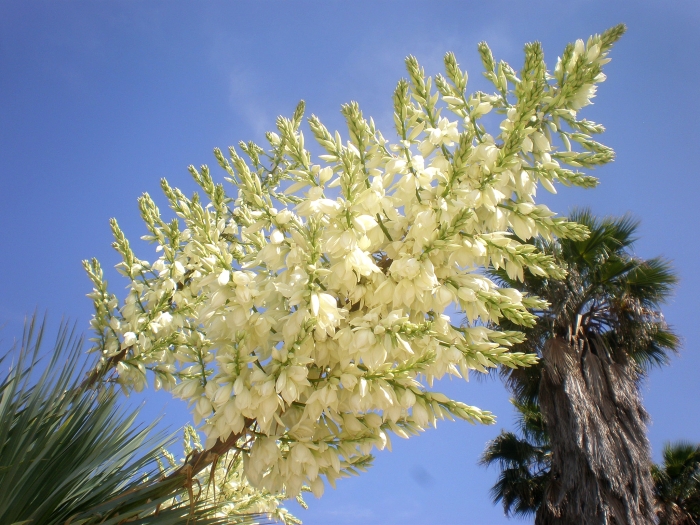Beaked Yucca
(Yucca rostrata)
Beaked Yucca (Yucca rostrata)
/
/

Consultaplantas
CC BY-SA 4.0
Image By:
Consultaplantas
Recorded By:
Copyright:
CC BY-SA 4.0
Copyright Notice:
Photo by: Consultaplantas | License Type: CC BY-SA 4.0 | License URL: https://creativecommons.org/licenses/by-sa/4.0 | Uploader: Consultaplantas | Publisher: Wikimedia Commons | Title: Yucca_rostrata_3c.JPG | Notes: Uploaded own work with UploadWizard |




























Estimated Native Range
Summary
Yucca rostrata, commonly known as Beaked Yucca, is a slow-growing, evergreen perennial plant native to the high deserts of Texas and the Chihuahuan Desert of Mexico, including the states of Chihuahua and Coahuila. It is well-adapted to arid environments, often found on rocky slopes and in scrublands where it contributes to the desert ecology. Yucca rostrata can reach up to 15 feet (4.5 meters) in height, forming a stout, cylindrical trunk topped with a spherical crown of narrow, blue-gray leaves that are strikingly ornamental. The plant produces a spectacular 3-foot (1 meter) tall panicle of creamy-white flowers in late spring to early summer, which are highly attractive to a variety of pollinators.
Beaked Yucca is valued for its architectural form and is often used as a focal point in xeriscapes, rock gardens, and desert-themed landscapes. Its drought tolerance and low water requirements make it an excellent choice for water-wise gardening. It thrives in full sun and requires well-drained soils, preferably sandy or gravelly substrates. While generally low-maintenance, it can be susceptible to root rot if overwatered or planted in poorly draining soils. Beaked Yucca is not known for aggressive roots or significant disease problems, making it a reliable and long-lived addition to the garden.CC BY-SA 4.0
Beaked Yucca is valued for its architectural form and is often used as a focal point in xeriscapes, rock gardens, and desert-themed landscapes. Its drought tolerance and low water requirements make it an excellent choice for water-wise gardening. It thrives in full sun and requires well-drained soils, preferably sandy or gravelly substrates. While generally low-maintenance, it can be susceptible to root rot if overwatered or planted in poorly draining soils. Beaked Yucca is not known for aggressive roots or significant disease problems, making it a reliable and long-lived addition to the garden.CC BY-SA 4.0
Plant Description
- Plant Type: Tree, Shrub, Succulent
- Height: 5-12 feet
- Width: 3-8 feet
- Growth Rate: Slow
- Flower Color: White, Cream
- Flowering Season: Spring, Summer
- Leaf Retention: Evergreen
Growth Requirements
- Sun: Full Sun
- Water: Low, Very Low
- Drainage: Fast
Common Uses
Bee Garden, Bird Garden, Border Plant, Butterfly Garden, Deer Resistant, Drought Tolerant, Fire Resistant, Fragrant, Hummingbird Garden, Low Maintenance, Potted Plant, Rabbit Resistant, Rock Garden, Salt Tolerant, Showy Flowers, Street Planting
Natural Habitat
High deserts of Texas and the Chihuahuan Desert of Mexico, including rocky slopes and scrublands
Other Names
Common Names: Izote Kikapú
Scientific Names: , Yucca rostrata, Yucca linearis, Yucca rostrata var. linearis, Yucca sostrata var. linearis,
GBIF Accepted Name: Yucca rostrata Engelm. ex Trel.